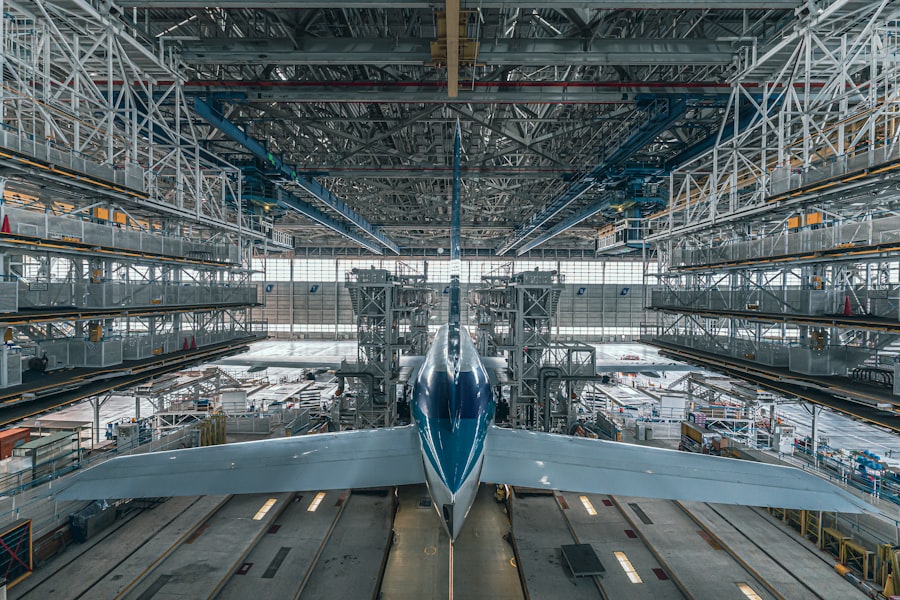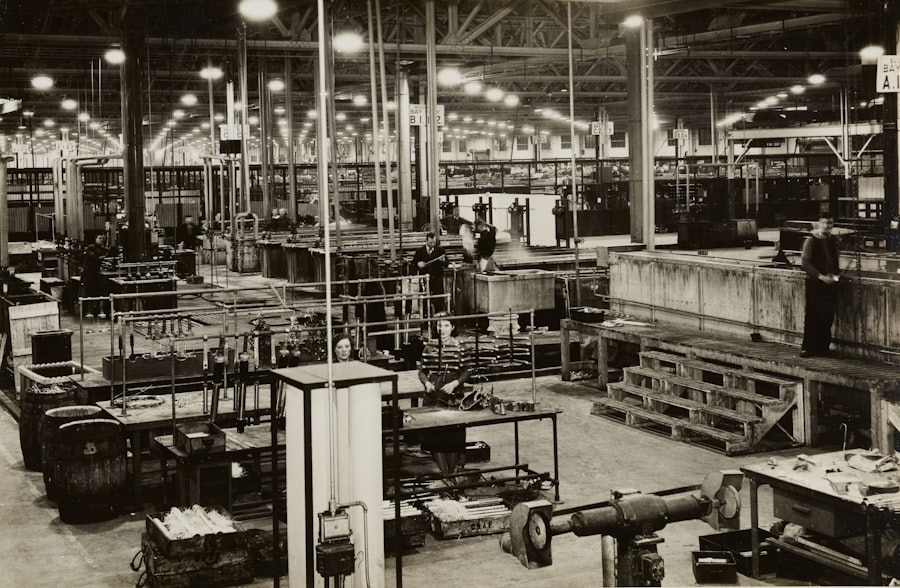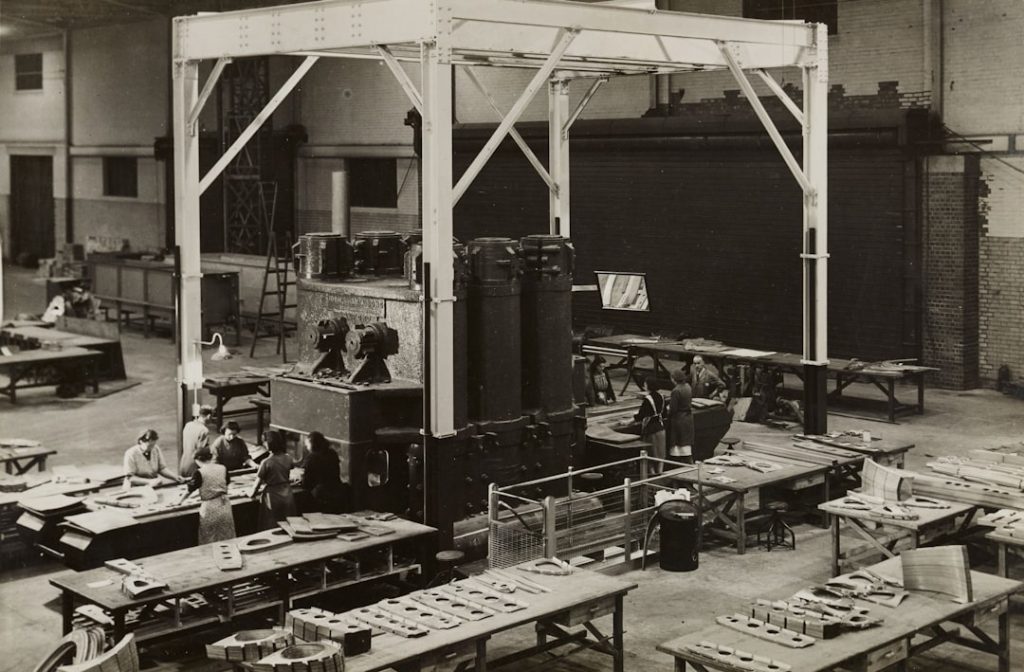Aerospace manufacturing is a highly specialized sector that encompasses the design, production, and assembly of aircraft, spacecraft, satellites, and related systems and equipment. This industry is characterized by its complexity and the stringent regulatory standards that govern safety and performance. The aerospace sector has evolved significantly over the decades, driven by technological advancements, increasing demand for air travel, and the need for more efficient and environmentally friendly solutions.
The interplay of engineering, materials science, and cutting-edge technology defines the landscape of aerospace manufacturing today. The aerospace industry is not only pivotal for transportation but also plays a crucial role in national defense, space exploration, and global connectivity. Major players in this field include Boeing, Airbus, Lockheed Martin, and Northrop Grumman, among others.
These companies are at the forefront of innovation, constantly pushing the boundaries of what is possible in terms of design and functionality. As the industry continues to grow, it faces challenges such as rising production costs, supply chain disruptions, and the need for sustainable practices. Understanding the intricacies of aerospace manufacturing is essential for grasping how these challenges are being addressed and what the future holds for this vital sector.
Key Takeaways
- Aerospace manufacturing involves the production of aircraft, spacecraft, and related components using advanced technologies and materials.
- Additive manufacturing and 3D printing are revolutionizing aerospace manufacturing by enabling the production of complex and lightweight parts with reduced lead times.
- Advanced materials and composites, such as carbon fiber and titanium, are being increasingly used in aerospace manufacturing to improve performance and fuel efficiency.
- Automation and robotics are playing a crucial role in aerospace manufacturing by increasing productivity, precision, and safety in the production process.
- Digital twin technology is being adopted in aerospace manufacturing to create virtual replicas of aircraft and components, enabling real-time monitoring and predictive maintenance.
Additive Manufacturing and 3D Printing in Aerospace
Additive manufacturing, commonly known as 3D printing, has revolutionized aerospace manufacturing by enabling the production of complex geometries that were previously impossible or prohibitively expensive to create using traditional methods. This technology allows for layer-by-layer construction of components, which not only reduces material waste but also shortens lead times significantly. For instance, GE Aviation has successfully utilized 3D printing to produce fuel nozzles for its LEAP jet engine.
This component, which was traditionally made from multiple parts, is now manufactured as a single piece, resulting in a lighter and more efficient design. The benefits of additive manufacturing extend beyond just weight reduction. It also facilitates rapid prototyping, allowing engineers to iterate designs quickly and test them in real-world conditions without the lengthy delays associated with conventional manufacturing processes.
Companies like Airbus have embraced this technology to produce parts for their A350 XWB aircraft. By integrating 3D-printed components into their supply chain, they have been able to enhance performance while reducing costs. Furthermore, the ability to produce parts on-demand can significantly mitigate supply chain risks, particularly in an industry where precision and reliability are paramount.
Advanced Materials and Composites in Aerospace Manufacturing

The aerospace industry has increasingly turned to advanced materials and composites to meet the demands for lighter, stronger, and more durable components. Traditional materials like aluminum are being supplemented or replaced by advanced composites such as carbon fiber reinforced polymers (CFRP) and titanium alloys. These materials offer superior strength-to-weight ratios, which are critical for improving fuel efficiency and overall performance in aircraft design.
For example, the Boeing 787 Dreamliner utilizes approximately 50% composite materials in its structure, resulting in significant weight savings that translate into lower operational costs. In addition to weight reduction, advanced materials also provide enhanced resistance to corrosion and fatigue, which are essential for components subjected to extreme conditions during flight. The use of titanium alloys in critical engine components exemplifies this trend; these materials can withstand high temperatures and pressures while maintaining structural integrity.
The development of new composite materials continues to evolve, with research focusing on bio-based composites and self-healing materials that could further enhance the longevity and sustainability of aerospace components.
Automation and Robotics in Aerospace Manufacturing
| Metrics | Data |
|---|---|
| Percentage of tasks automated | 75% |
| Number of robotic arms used | 150 |
| Reduction in production time | 40% |
| Cost savings from automation | 2 million |
Automation and robotics have become integral to modern aerospace manufacturing processes, enhancing efficiency and precision while reducing human error. Automated systems are employed in various stages of production, from assembly lines to quality control inspections. For instance, robotic arms are used for tasks such as drilling, fastening, and painting aircraft components with remarkable accuracy.
This not only speeds up production but also ensures consistent quality across all manufactured parts. Moreover, automation allows manufacturers to address labor shortages and improve workplace safety by taking over hazardous tasks. Companies like Boeing have implemented automated systems in their production facilities to streamline operations and reduce costs.
The integration of robotics with artificial intelligence (AI) further enhances these capabilities by enabling machines to learn from their environment and adapt to changing conditions on the production floor. As these technologies continue to advance, they promise to reshape the landscape of aerospace manufacturing by enabling more flexible and responsive production systems.
Digital Twin Technology in Aerospace Manufacturing
Digital twin technology represents a significant leap forward in aerospace manufacturing by creating virtual replicas of physical assets. These digital models allow manufacturers to simulate performance under various conditions, monitor real-time data from actual components, and predict potential failures before they occur. This proactive approach enhances maintenance strategies and optimizes operational efficiency throughout an aircraft’s lifecycle.
For example, Rolls-Royce has implemented digital twin technology in its engine management systems. By continuously analyzing data from engines in operation, they can predict maintenance needs and optimize performance based on real-world usage patterns. This not only reduces downtime but also extends the lifespan of critical components.
The ability to visualize complex systems through digital twins enables engineers to make informed decisions regarding design modifications or upgrades based on empirical data rather than assumptions.
Sustainable and Environmentally Friendly Practices in Aerospace Manufacturing

As environmental concerns become increasingly pressing, the aerospace industry is actively seeking sustainable practices throughout its manufacturing processes. This includes reducing carbon emissions during production, minimizing waste generation, and utilizing eco-friendly materials. Companies are investing in research to develop alternative fuels that can significantly lower the carbon footprint of air travel.
For instance, sustainable aviation fuels (SAFs) derived from renewable sources are being tested by major airlines as a viable alternative to traditional jet fuels. In addition to fuel innovations, manufacturers are adopting circular economy principles by recycling materials used in production processes. Boeing has initiated programs aimed at recycling aluminum scrap generated during manufacturing operations.
By reintroducing these materials into the supply chain, they not only reduce waste but also decrease the demand for virgin resources. Furthermore, initiatives focused on energy efficiency within manufacturing facilities are gaining traction; many companies are transitioning to renewable energy sources such as solar or wind power to reduce their overall environmental impact.
Supply Chain and Collaboration in Aerospace Manufacturing
The complexity of aerospace manufacturing necessitates a robust supply chain that can adapt to changing demands while ensuring quality and compliance with regulatory standards. Collaboration among various stakeholders—suppliers, manufacturers, regulatory bodies, and research institutions—is essential for fostering innovation and addressing challenges within the industry. The COVID-19 pandemic highlighted vulnerabilities within global supply chains, prompting companies to reassess their strategies for sourcing materials and components.
To enhance resilience, many aerospace manufacturers are diversifying their supplier base and investing in local sourcing initiatives. This not only mitigates risks associated with geopolitical tensions or natural disasters but also supports local economies. Collaborative platforms that facilitate information sharing among partners are becoming increasingly important; these platforms enable real-time communication regarding inventory levels, production schedules, and quality control measures.
By fostering a culture of collaboration across the supply chain, companies can enhance efficiency while maintaining high standards of safety and reliability.
Future Outlook and Challenges in Aerospace Manufacturing
Looking ahead, aerospace manufacturing faces a myriad of challenges that will shape its evolution over the coming years. One significant challenge is the need for continuous innovation amid increasing competition from emerging markets. Countries such as China and India are investing heavily in their aerospace capabilities, which could disrupt established players if they succeed in developing competitive products at lower costs.
Additionally, the industry must navigate regulatory changes aimed at enhancing safety and environmental sustainability. As governments worldwide implement stricter emissions standards and safety regulations, manufacturers will need to adapt their processes accordingly while balancing cost pressures. The integration of new technologies such as artificial intelligence and machine learning will be crucial for maintaining competitiveness; however, this requires significant investment in workforce training to ensure that employees possess the necessary skills to operate advanced systems.
In conclusion, while aerospace manufacturing is poised for growth driven by technological advancements and increasing demand for air travel, it must also confront significant challenges related to competition, regulation, and sustainability. The industry’s ability to innovate while maintaining safety standards will determine its trajectory in an ever-evolving global landscape.


